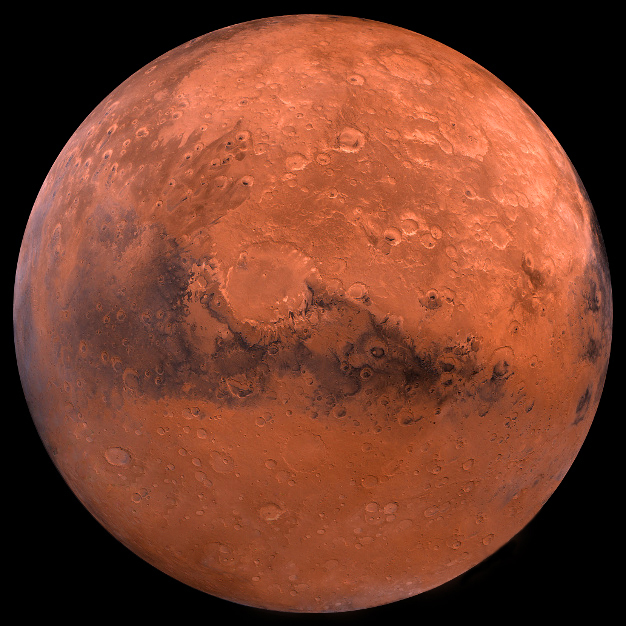
In 2003, the Mars Odyssey orbiter spacecraft, equipped with cameras that could see both visible and infrared reflections from the Martian surface, found a surprisingly hefty amount of ice across the planet.
Normally, ice allows dangerous levels of ultraviolet radiation to shine through. The new study simulated radiation and water flow and found that just a small amount of Martian dust inside ice resulted in dangerous ultraviolet levels 25 times lower than in pure ice.
Mars isn’t exactly a vacation destination. Martian ice likely began as dusty snow, which eventually compacted into ice over a few million years.
In its mid-latitudes-the “Comfortable” zone-some dusty ice fields were covered up by rocks then later excavated by meteorite impacts to re-expose the ice.
“Polar locations on Mars are too cold for snow and ice to melt,” wrote the authors.
To test the idea, the team developed a computer program to predict how snow morphs into ice blobs or glaciers on Earth and Mars based on historical data.
The simulation tapped the physics of water, ice, and snow and how they change when mixed with impurities such as Martian dust.
The results were clear: Compared to pure water ice, ice spiked with Martian dust absorbed at least seven orders of magnitude more radiation overall and slashed levels of dangerous ultraviolet radiation.
In ice made up of just 0.1 percent dust, ultraviolet radiation levels tanked without blocking the crucial wavelengths of light that support photosynthesis.
Although Martian polar ice is too cold to melt, mid-latitude snowpacks with a little dust just a few inches below the ice could similarly generate enough water to support life and combat solar radiation.
Martian water runoffs, for example, rely on the size of ice chunks.
The study suggests that photosynthesis just might be possible for organisms buried in snow and ice on Mars.
“If small amounts of liquid water are available at these depths, mid-latitude ice exposures could represent the most easily accessible locations to search for extant life on Mars,” wrote the team.
